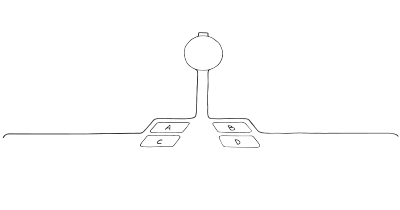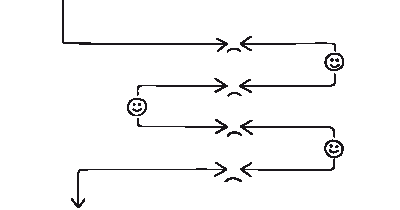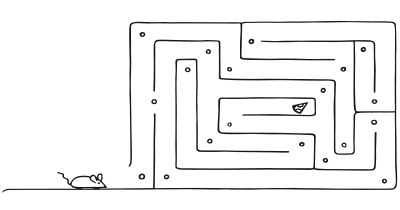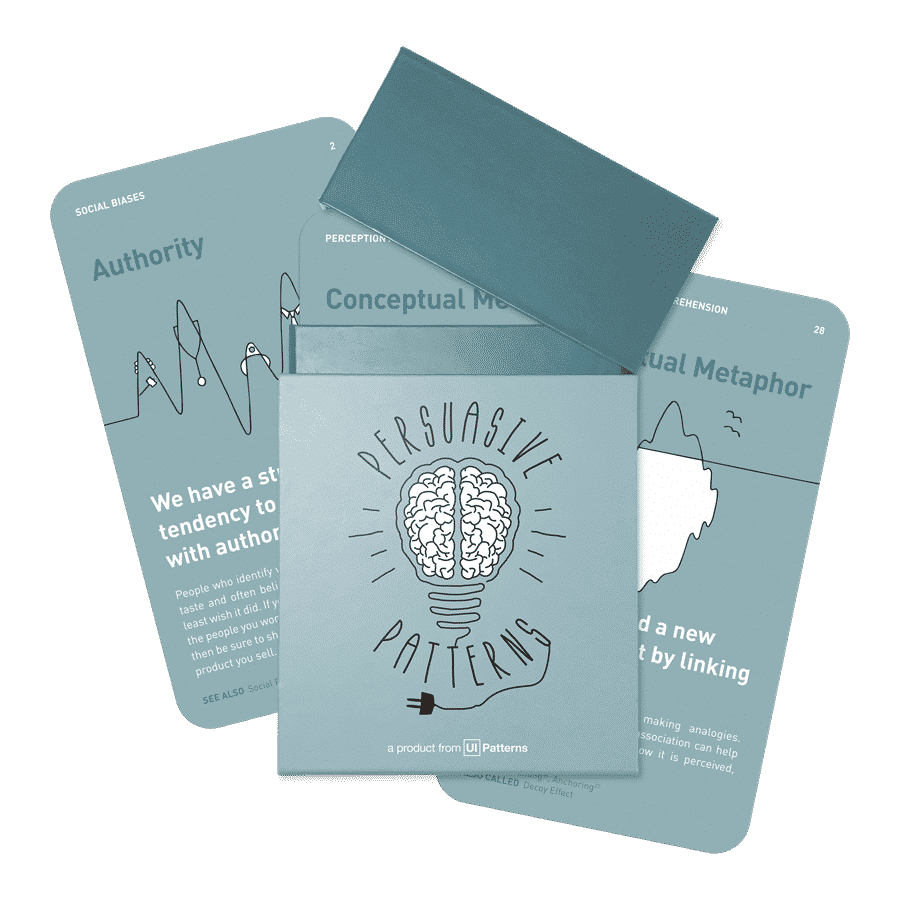Persuasive Technique
Also called: Personalization
This persuasive pattern is part of the Persuasive Patterns printed card deck.
The Persuasive Patterns Card Deck is a collection of 60 design patterns driven by psychology, presented in a manner easily referenced and used as a brainstorming tool.
Get your deck!Tailoring is a technique that involves strategic adaptation of a system’s offerings to meet individual users’ specific needs and abilities. This technique hinges on the customization of user experience to ensure maximum relevance and efficiency.
Imagine a person trying to adopt a healthier lifestyle. They start by downloading a fitness app. Initially, the app offers a generic workout plan, but as the person uses it more, the app begins to tailor its recommendations based on the user’s progress, preferences, and feedback. This personalization makes the workout experience more engaging and effective for the user, as they feel the app understands their unique needs and abilities.
Similarly, a learning platform starts with a general curriculum. However, as students interact with the platform, it adapts the content to match their learning pace, style, and areas of interest. This approach is rooted in research showing that tailoring digital products to individual users’ needs and abilities can increase user engagement and satisfaction. This personalization enhances the learning experience, making it more relevant and engaging for each student.
The study
One seminal study that illustrates the power of Tailoring is Fogg’s exploration of the role of simplicity in technology adoption and usage. He posits that making a behavior easier to do (by aligning it with the user’s ability) increases the likelihood of the behavior occurring. This principle is directly applicable to tailoring in product design, where customization and personalization are used to align product features and user interfaces with the unique needs, preferences, and abilities of different users.
Fogg’s research showed that when technology is tailored to fit the individual user’s context – including their physical environment, social setting, and emotional state – it significantly enhances user engagement and persuasiveness. This is because tailored technology can tap into the user’s daily routines and habits more effectively, making the desired behavior more intuitive and less disruptive.
Fogg, B. J. (2009). A behavior model for persuasive design. Proceedings of the 4th International Conference on Persuasive Technology - Persuasive ‘09.
Tailoring is a crucial technique to help increase the likelihood of a user performing a desired action. By aligning a system’s functionalities and content with the unique preferences, abilities, and requirements of each user, tailoring ensures a more engaging and user-friendly experience. The primary goal is to reduce friction in user interaction, thereby facilitating desired behaviors, whether it’s making a purchase, learning a new skill, or adapting to a new tool.
The psychological principle underlying the pattern of “Tailoring” is fundamentally based on the concept of personalized persuasion. This principle recognizes that individuals have unique preferences, needs, and abilities, and therefore, a one-size-fits-all approach to persuasion or behavior change is less effective compared to personalized strategies.
People vary in their attitudes, interests, values, and behaviors. Tailoring acknowledges these differences and adapts the message or design to resonate with the individual’s specific characteristics.
Personalized content or interactions are more likely to be perceived as relevant by the user. This increased relevance enhances engagement, as people are more inclined to interact with content that reflects their personal interests and needs.
Tailoring can increase a person’s sense of Autonomy and control. When users feel that a system or product is designed to meet their specific needs, they are more likely to feel in control of their interactions, leading to greater satisfaction and effectiveness.
Personalized experiences can boost a user’s confidence in their ability to perform a specific behavior (self-efficacy). When individuals receive tailored information or prompts that align with their abilities and challenges, they are more likely to believe they can successfully complete the desired actions.
Tailoring aligns with several behavior change theories, including the Fogg Behavior Model, which emphasizes the need for behavior to be triggered at moments when the user is both motivated and able to perform it. Tailoring ensures that these Triggers are relevant and personalized, increasing the likelihood of successful behavior change.
In Social Cognitive Theory, proposed by Albert Bandura, the role of observational learning, social experiences, and reciprocal determinism in behavior change is emphasized. Tailoring can leverage these aspects by providing personalized feedback and vicarious experiences that are aligned with the individual’s social context and cognitive processes.
Tailored experiences often include Feedback Loops that provide users with specific information about their progress or performance. This feedback is more effective when it is personalized, as it can provide more meaningful and actionable insights for the user.
Designing products with Tailoring
To effectively apply the tailoring technique, your starting point is a comprehensive understanding of the user. This involves identifying not just their needs but also their abilities and limitations. This can be achieved through user research, surveys, and data analysis. It’s essential to create user personas that reflect the diverse range of users who interact with your product. These personas should include information about user behaviors, preferences, and potential obstacles they might face while using your product.
Integrating BJ Fogg’s Behavior Model
BJ Fogg’s Behavior Model emphasizes three core elements for a behavior to occur: motivation, ability, and a prompt. When applying tailoring:
Align with motivations: Understand what drives your users. Tailor your product to align with these motivations, whether it’s through personalized content, rewards, or features that resonate with their goals.
Reduce abilities needed: Your design should not only match the user’s needs but also their ability to perform the required actions. This might mean simplifying processes, providing helpful tutorials, or adjusting the interface to be more intuitive.
Design effective prompts: Identify the right moments to Trigger user action. These prompts should be personalized and appear at moments when the user is most likely to take the desired action.
Tailoring is often about personalization and customization. Allow users to customize aspects of the product to fit their personal preferences or needs. This could range from aesthetic changes, like themes and layouts, to more functional aspects like setting personal goals or filtering content.
Incorporate feedback loops that inform users how their inputs are affecting the output. This not only makes the experience more engaging but also helps users understand the impact of their actions, leading to a more tailored experience.
Here’s an in-depth look at how tailoring can be effectively applied across various use cases:
- Decision-Making
When users encounter options that align with their past behaviors and preferences, they are more likely to feel understood and catered to. This personalized approach reduces the cognitive load of decision-making, making the process quicker and more efficient. Proactively suggesting options based on observed choices further streamlines the decision process, leading to a more satisfactory user experience. - Conversion
Customizing calls to action based on a user’s interaction history can dramatically increase conversion rates. This approach demonstrates an understanding of the user’s journey, making the call to action more relevant and compelling. Personalized incentives, such as tailored discounts or bonuses, create a sense of individual attention and appreciation, further motivating users to convert. - Branding
Tailoring branding messages to reflect the values and interests of specific audience segments fosters a deeper connection between the user and the brand. Personalized brand experiences, where the branding aligns with individual user preferences, resonate more strongly, enhancing brand loyalty and engagement. - Experience
Adaptive user interfaces that change based on a user’s habits and preferences create a sense of familiarity and ease of use. Contextual assistance, offering help based on the user’s current activity, ensures that the support is relevant and timely, enhancing the overall user experience. - Loyalty
Offering rewards that align with the user’s interests not only fosters loyalty but also demonstrates that the brand values and understands the user. Tailored communication, such as personalized messages or updates, makes users feel special and appreciated, encouraging continued engagement. - Pricing
Implementing dynamic pricing models that adjust based on a user’s engagement or loyalty status can make pricing seem more fair and personalized. Customized offers based on purchasing behavior can incentivize further purchases by tapping into the user’s specific interests or needs. - As a core product concept
Developing features that adapt to user preferences over time keeps the product relevant and engaging for each individual user. Allowing users to personalize core aspects of the product gives them a sense of control and ownership, enhancing their connection to the product. - As a business model
Mass customization merges the efficiency of mass production with the allure of personalization, offering users a range of predefined options to tailor products to their preferences. This approach balances choice and simplicity, fostering a sense of ownership and long-term loyalty. On the other hand, the user-designed model delves deeper, empowering users to directly influence the design process. This model is particularly effective in niche markets where a high degree of customization is valued. Both models thrive on providing users with a sense of control and ownership over their products, which not only meets their individual needs but also strengthens their emotional connection to the brand, ultimately driving loyalty and advocacy. - Onboarding
Personalized onboarding experiences that adapt to the skill level or interests of the user make the learning curve smoother and more engaging. Interactive elements that cater to the user’s learning style and pace can significantly enhance the onboarding process, making it more effective. - For task completion
Adapting the sequence or complexity of tasks based on user proficiency can help in minimizing frustration and enhancing the sense of achievement. Providing contextual tips and guidance relevant to the user’s current task level offers timely assistance, making task completion more efficient and satisfying.
Ethical recommendations
The misuse of tailoring in persuasive design can occur when the technique is used to manipulate or exploit users. For example, tailoring can be misused by presenting options that lead users to make decisions that are not in their best interest but benefit the service provider. This can include tailoring choices that encourage excessive spending or use of a product, or the collection and use of personal data without transparent consent. Misuse can also occur when tailoring results in exclusion or unfair treatment of certain user groups due to biases in the data or algorithms used for personalization.
To ensure ethical use of tailoring, the following best practices are recommended:
- Be transparent
Be transparent about how user data is collected, used, and stored. Users should be informed about what data is being collected and how it is being used to tailor their experience. - Get user consent
Obtain explicit consent from users before collecting and using their data for personalization. Ensure users have control over their data and can opt out of data collection and personalization features if they wish. - Avoid manipulation
Tailoring should be used to enhance user experience and provide value, not to manipulate or exploit users. Avoid designing systems that trick users into making decisions that are not in their best interest. - Be inclusive and fair
Ensure that the algorithms and data used for tailoring do not perpetuate biases or discrimination. Regularly audit and update systems to promote fairness and inclusivity. - Respect privacy
Uphold user privacy by implementing robust data security measures. Minimize data collection to what is necessary and be vigilant about protecting user information. - Prioritize user well-being
Focus on the needs and well-being of users. Use tailoring to provide meaningful and beneficial experiences that respect user autonomy and decision-making.
Examples
Netflix
Uses sophisticated algorithms to provide personalized show and movie recommendations based on individual viewing histories.
Grammarly
Grammarly, a writing assistance tool, tailors suggestions based on the context and tone of the user’s writing. It adapts its feedback to suit the specific writing style and goals of the user, whether it’s a formal business document or a casual email.
Google Maps
Google Maps offers personalized location suggestions based on a user’s travel history and preferences. It tailors route recommendations, traffic updates, and nearby place suggestions to enhance the user’s navigation experience.
Trigger Questions
- How can we segment our users to provide more relevant experiences?
- What user data can we leverage for meaningful personalization?
- How can our interface adapt to individual user behaviors or preferences?
- In what ways can we integrate user feedback for continuous improvement?
- Are there any privacy concerns with our personalization approach?
- How can we balance personalization with simplicity and ease of use?
Pairings
Tailoring + Priming Effect
This combination uses customized content to prime users for certain behaviors or attitudes. For example, a financial management app might display personalized savings tips based on the user’s spending habits, priming them for more prudent financial decisions.

Adapt the offerings of a system to match individual users- needs and abilities

Decisions are unconsciously shaped by what we have recently experienced
Tailoring + Autonomy Bias
Empower users by providing tailored choices that align with their preferences, thus enhancing their sense of control and satisfaction. An e-commerce platform could offer personalized product recommendations, allowing users to feel their unique tastes are recognized and catered to.

Adapt the offerings of a system to match individual users- needs and abilities

We strive to feel in control
Tailoring + Simulation
Pairing Tailoring with Simulation involves creating scenarios or environments where users can experience a personalized version of a product or service. This combination allows users to see firsthand how a product adapts to their specific needs or preferences. For example, in a car customization simulator, users could select various features and immediately see how these choices impact the car’s appearance and performance. This pairing is effective because it gives users a tangible sense of how the tailored product fits their unique requirements.

Adapt the offerings of a system to match individual users- needs and abilities

Give people first-hand insight into how inputs affect an output
Tailoring + Cognitive Dissonance
Combining Tailoring with Cognitive Dissonance can be used to encourage users to align their actions with their beliefs or desired self-image. For instance, a health app could tailor its messages to remind users of their stated health goals whenever they track unhealthy eating habits, creating a dissonance that motivates behavior change. This pairing works by personalizing the experience to the user’s goals and then leveraging the discomfort of cognitive dissonance to drive positive change.

Adapt the offerings of a system to match individual users- needs and abilities

When we do something that is not in line with our beliefs, we change our beliefs
Tailoring + Curiosity Effect
Integrating Tailoring with the Curiosity Effect can increase user engagement by providing personalized information that piques curiosity. For instance, a learning platform could suggest tailored educational content based on a user’s previous interactions, leaving some questions partially answered to encourage further exploration. This approach keeps users engaged by continually adapting to their interests and leveraging their natural curiosity.

Adapt the offerings of a system to match individual users- needs and abilities

We crave more when teased with a small bit of interesting information
Tailoring + Competition
When Tailoring is paired with Competition, it creates a personalized competitive environment. For example, a fitness app could allow users to enter tailored challenges based on their fitness level and track record. Users could be pitted against others with similar abilities, making the competition feel fairer and more engaging. This pairing works well as it motivates users through competition while ensuring they don’t feel overwhelmed or under-challenged.

Adapt the offerings of a system to match individual users- needs and abilities

We strive to attain things that cannot be shared
This persuasive pattern is part of the Persuasive Patterns printed card deck.
The Persuasive Patterns Card Deck is a collection of 60 design patterns driven by psychology, presented in a manner easily referenced and used as a brainstorming tool.
Get your deck!- Persuasive Technology: Using Computers to Change What We Think and Do by Fogg
- The Psychology of Tailoring-Ingredients [ by Dijkstra
- Fogg, B. J. (2003). Persuasive Technology: Using Computers to Change What We Think and Do. Morgan Kaufmann Publishers.
- Fogg, B. J. (2009). A behavior model for persuasive design. Proceedings of the 4th International Conference on Persuasive Technology, Article No. 40.
- Norman, D. A. (1988). The Psychology of Everyday Things. Basic Books.
- Thaler, R. H., & Sunstein, C. R. (2008). Nudge: Improving decisions about health, wealth, and happiness. Yale University Press.
- Jones, A. & Williams, M. (2015). Personalization in web design: Effects on user experience. Journal of Web Design, 10(3), 22-37.
